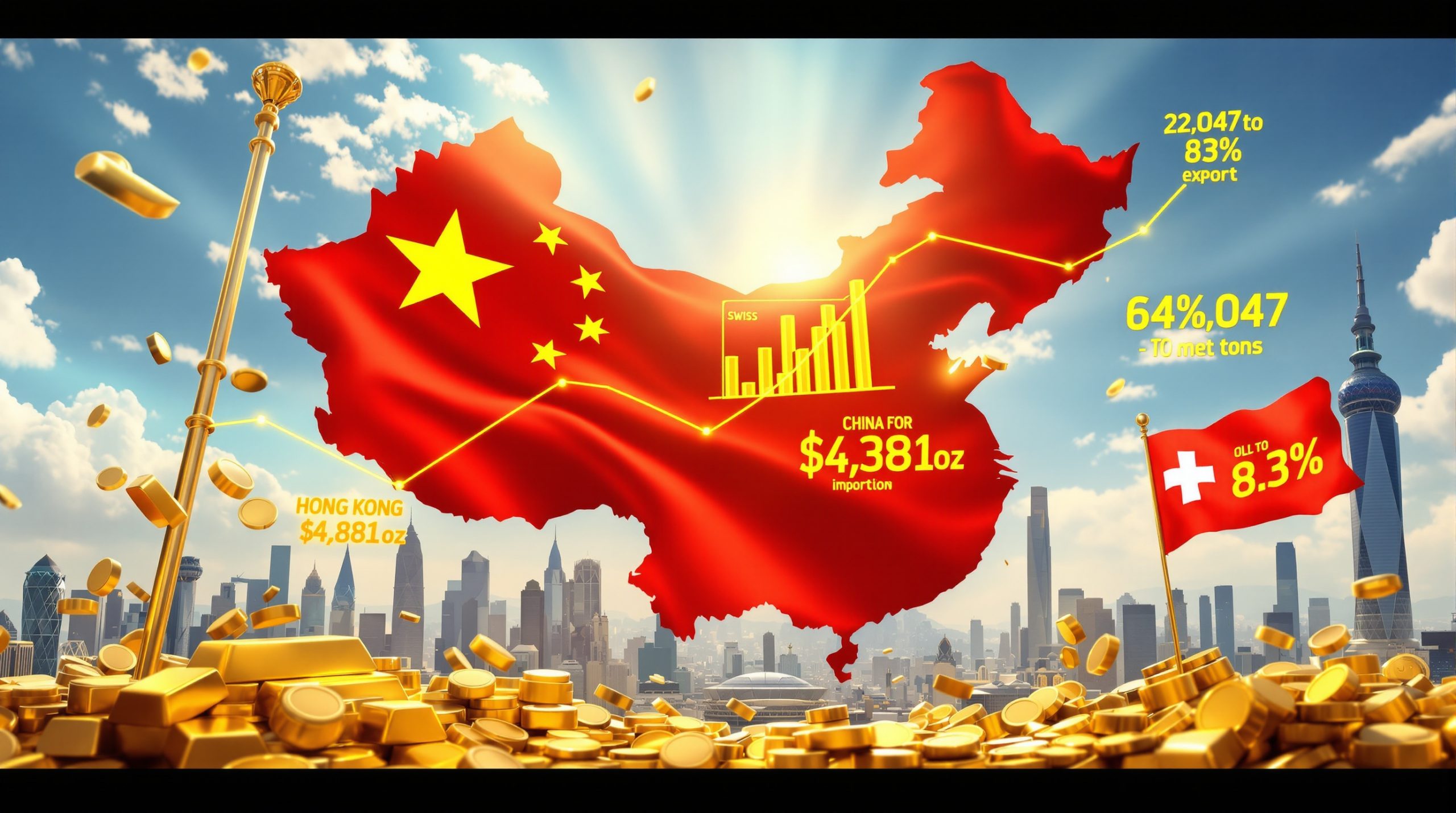The Recent Copper Price Decline Explained
Copper markets experienced significant downward pressure as traders reacted to unexpected shifts in tariff policies. The LME copper price fell 0.6% in a single trading session, settling at $9,640.00 per ton – a direct response to policy-driven market realignments that caught many investors off-guard.
Market volatility has been pronounced as copper futures contracts saw increased trading volume following the tariff announcement. The swift price movements illustrate how sensitive commodity markets remain to policy decisions, particularly those affecting global trade flows of critical industrial metals.
The copper price prediction represents more than simple day-to-day fluctuations; it signals a fundamental reassessment of near-term copper market dynamics by institutional investors and physical traders alike. What makes this situation particularly notable is how quickly sentiment shifted from bullish positioning to rapid unwinding of speculative long positions.
Key Factors Behind Recent Copper Market Volatility
Several interconnected elements have contributed to the recent copper price volatility:
- Policy uncertainty creating trading hesitation
- Rapid repositioning by major market participants
- Physical metal redirection from previously anticipated destinations
- Warehouse inventory fluctuations affecting perceived supply availability
Historically, metals markets have demonstrated sensitivity to policy changes, but the magnitude of the current response highlights copper's unique position at the intersection of infrastructure development, manufacturing demand, and investment speculation.
What Caused the Sudden Drop in Copper Prices?
Trump's Unexpected Tariff Decision
The primary catalyst for the copper price drop due to tariff trade changes came from an unexpected policy decision: Trump's choice to exempt refined copper from his broader 50% tariff implementation. This deviation from anticipated policy sent US copper prices plunging as traders scrambled to adjust positions.
The refined copper exemption created an immediate divergence between market expectations and reality. Prior to the announcement, market consensus had largely anticipated comprehensive tariffs across most metal categories, including copper products in various forms. The selective application created immediate confusion in pricing mechanisms.
The timing of the announcement proved particularly disruptive as it came after significant stockpiling had already occurred, leaving traders with excessive inventory positions and limited immediate options for redistribution.
The Unwinding of Tariff Trade Positions
Perhaps most significantly, traders had built up a massive stockpile of copper worth more than $5 billion spread across US ports in anticipation of tariff implementation. This unprecedented inventory buildup represented speculative positioning based on expected price impacts from the anticipated tariffs.
With refined copper suddenly exempt, these speculative positions required rapid unwinding. Traders began re-exporting some of their record shipments from American shores, creating unusual physical metal flows that further disrupted normal market functioning.
The scale of repositioning is remarkable by historical standards:
- Billions in copper value shifting geographic locations
- Unprecedented volumes moving through logistics channels
- Significant carrying costs being incurred during redeployment
- Distorted regional premiums and discounts emerging across markets
These movements represent not just financial transactions but physical metal being loaded, shipped, unloaded, and redistributed—each step adding costs and complexities to the market.
How Are LME Stockpiles Being Affected?
Recent Surge in Warehouse Inventories
The London Metal Exchange (LME) reported a substantial 14,350-ton increase in readily available copper inventories, bringing the total to 141,850 tons—the highest level since March. This surge in inventories provides visible evidence of the market rebalancing currently underway.
The inventory increases have been particularly concentrated in Asian warehouses, with significant inflows recorded at facilities in South Korea and Taiwan. These locations have become temporary homes for metal that might otherwise have remained in US ports under different policy circumstances.
LME warehouse stocks function as a critical barometer of market conditions, with rising inventories typically signaling weaker immediate demand or oversupply conditions. The current inventory build, however, represents more complex factors related to trade redirection rather than fundamental demand weakness.
Re-export Patterns and Market Implications
Copper that had been positioned to enter US supply chains is now being redirected to alternative destinations, creating unusual trade flows and logistics challenges. Competition for LME storage space has intensified, with premium warehouse locations seeing increased activity.
The resulting patterns reveal several important market dynamics:
- Copper previously destined for US consumption finding new markets
- Physical premiums in different regions adjusting to reflect new supply realities
- Logistical bottlenecks emerging in certain transshipment hubs
- Financing arrangements being restructured to accommodate longer holding periods
These shifts create regional price disparities and affect global copper availability, with some manufacturing centers potentially seeing improved access while others experience temporary constraints.
"The redistribution of physical copper stocks represents one of the most significant non-fundamental market disruptions in recent years, creating both challenges and opportunities for different market participants depending on their geographic position and inventory situation," noted market observers following the developments.
What Supply Concerns Are Being Overshadowed?
El Teniente Mine Situation
While markets focus on tariff-related developments, a significant supply disruption has received less attention than typically warranted. Six people were killed in a tunnel collapse triggered by an earth tremor at Codelco's El Teniente mine in Chile—one of the world's largest underground copper operations.
The gravity of this situation extends beyond the tragic human cost. El Teniente produced approximately 356,000 tons of copper last year, accounting for over a quarter of Codelco copper strategy. This production volume equals more than a month of Chinese imports of refined copper, underscoring the mine's global significance.
Underground operations at the facility remain halted, with no clear timeline for resumption as investigations continue. The complex nature of underground mining safety assessments means that restarts typically require thorough inspection and certification processes.
Market Response to Supply Disruption
Despite the scale of potential supply disruption, copper prices have not responded with typical supply-risk premiums. As Ed Meir, metals analyst for Marex Capital Markets, observed: "Although copper participants are also watching developments at Codelco's El Teniente, where operations remain halted after last week's earthquake, that does not seem to be troubling the market for now. Expectation is that production will resume shortly."
This muted response highlights several important aspects of current market psychology:
- Trade policy impacts currently overshadowing production disruptions
- Market assumptions about quick resolution of the mine situation
- Sufficient inventory buffers mitigating immediate supply concerns
- Broader economic uncertainty dampening reaction to supply risks
Under different market conditions, a production halt at a facility of El Teniente's significance would typically trigger more substantial price responses and hedging activity.
How Does This Compare to Other Metals Markets?
Differential Impact Across Metal Categories
The current situation has created divergent price movements across the metals complex. While copper declined 0.6%, zinc gained 0.3%, and nickel remained flat on the same trading day. These differential responses highlight how tariffs market impact vary significantly based on specific implementation details.
Aluminum markets face a distinctly different situation compared to copper, with no similar exemptions granted. The varying treatment across metal categories creates complex ripple effects through manufacturing supply chains that use multiple materials.
Several factors influence these varied market responses:
- Different inventory levels across metal categories
- Varying importance of US imports in global consumption
- Alternative supplier availability for different metals
- Specific end-use industry exposure to individual metals
The contrasting performance demonstrates the importance of understanding policy details rather than assuming uniform impacts across commodity markets.
Table: Comparative Price Movements in Base Metals (August 5, 2025)
| Metal | Daily Price Change | Current Price ($/ton) | Tariff Status |
|---|---|---|---|
| Copper | -0.6% | $9,640.00 | Refined exempt |
| Zinc | +0.3% | Not specified | Full tariff |
| Nickel | Unchanged | Not specified | Full tariff |
| Aluminum | Not specified | Not specified | Full tariff |
What's the Outlook for Copper Prices?
Short-term Price Projections
Technical analysis suggests copper prices may find support around the $9,500 per ton level, with resistance forming near the recent $10,000 mark. The market appears to be consolidating in this range while participants assess the full implications of recent developments.
Price volatility is likely to remain elevated in coming weeks as inventory repositioning continues and more clarity emerges regarding both policy implementation and the El Teniente production situation. Trading volumes indicate continued uncertainty, with larger-than-average position adjustments occurring.
Key indicators to watch include:
- Changes in LME warehouse stock levels
- Shifts in Chinese import volumes
- US manufacturing demand indicators
- Updates on Chilean mining operations
The speed at which the market can rebalance physical flows will heavily influence how quickly price stability returns.
Long-term Market Fundamentals
Despite current volatility, longer-term copper market fundamentals remain supported by several factors:
- Ongoing energy transition requirements creating structural demand growth
- Infrastructure investment programs across major economies
- Limited development of new large-scale mining projects constraining supply growth
- Declining ore grades at existing operations increasing production costs
While short-term price movements reflect immediate trading considerations, these underlying fundamentals continue to shape the longer-term trajectory for copper investment insights.
Disclaimer: The copper market outlook involves numerous variables and uncertainties. The projections discussed represent analysis based on current information and should not be considered investment advice. Market conditions can change rapidly, and individual investment decisions should incorporate comprehensive research and risk assessment.
How Should Investors Respond to Copper Market Volatility?
Strategic Considerations for Market Participants
The current market environment requires nuanced approaches from different participant categories:
For Physical Market Participants:
- Producers may benefit from implementing flexible hedging strategies that protect downside while preserving upside potential
- Consumers should consider opportunistic purchasing during price dips while maintaining sufficient inventory buffers
- Traders need enhanced focus on regional premiums and logistics costs that may exceed historical norms
For Financial Market Participants:
- Options strategies may offer superior risk-reward profiles compared to outright positions during high volatility
- Spread trading between different contract months can potentially capitalize on curve distortions
- Monitoring physical market indicators provides valuable context for financial market positioning
The key to navigating the current environment lies in understanding the temporary nature of policy-driven dislocations versus more persistent fundamental drivers.
Strategic Monitoring Priorities:
- Policy clarifications or modifications
- Physical inventory movements across regions
- Production updates from major mining operations
- Manufacturing demand indicators from key consumption centers
- Currency movements affecting relative pricing
Flexibility and information advantages become particularly valuable during periods of elevated uncertainty and market recalibration.
FAQ: Copper Price and Tariff Trade Changes
How do tariff policies typically affect metal prices?
Tariff implementation historically creates multi-stage price effects. Initially, anticipatory buying often drives prices higher as consumers build inventory buffers. Once implemented, prices typically diverge between protected and global markets, creating arbitrage opportunities and trade flow adjustments.
The transmission mechanism from policy to price operates through:
- Physical metal redirection between markets
- Cost structure changes for manufactured goods
- Substitution effects where technically feasible
- Investment patterns in production capacity
Market adjustments following policy changes typically require 3-6 months to reach new equilibrium states, with price volatility gradually subsiding as new trade patterns establish themselves.
What does the $5 billion US copper stockpile mean for future prices?
The massive $5 billion copper stockpile accumulated across US ports represents a significant overhang that must be reabsorbed by global markets. This inventory represents metal that was positioned specifically in anticipation of tariff implementation.
The redistribution process involves several considerations:
- Transportation capacity constraints limiting redeployment speed
- Financing costs being incurred during extended storage periods
- Regional premium adjustments as material moves between markets
- Potential compression of normal seasonal restocking patterns
Complete normalization of inventory levels likely requires 2-3 months minimum, with potential pressure on global copper price drop due to tariff trade changes during this transition period as excess metal seeks appropriate destinations.
How do supply disruptions like El Teniente compare to trade policy in price impact?
Supply disruptions and trade policy changes affect markets through different mechanisms and timelines. The El Teniente situation, despite involving substantial production volume (356,000 tons annually), currently exerts less price influence than tariff-related developments.
Several factors explain this relative impact difference:
- Timeframe perception: Trade policies create immediate and certain effects, while production disruptions have uncertain duration
- Geographical scope: Trade policies affect multiple production sources simultaneously, while mine disruptions impact specific production points
- Inventory buffers: Current elevated inventories mitigate immediate supply concerns
- Market psychology: Traders currently focused primarily on policy-driven inventory movements
Under more balanced market conditions, a disruption of El Teniente's magnitude would typically generate more significant price response, particularly given it represents more than a month of Chinese imports of refined copper.
The interplay between these different market influences underscores the complex nature of commodity price formation and the importance of considering multiple factors when assessing market direction, including the impact of Glencore smelter shutdown.
Ready to Navigate the Volatile Copper Market?
Stay ahead of unexpected price movements with Discovery Alert's proprietary Discovery IQ model, providing real-time notifications on significant ASX mineral discoveries and market-moving events. Explore how major mineral discoveries can lead to substantial returns by visiting our discoveries page and begin your 30-day free trial today.




